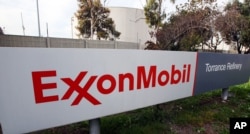Vietnam faces a pinch to economic development as China pressures it to stop exploring in a disputed sea for oil and natural gas, two important fuel sources for the fast-growing Southeast Asian country, analysts say.
Spanish driller Repsol last month quit a Vietnamese-approved project at Vanguard Bank in the South China Sea, apparently under pressure from China, foreign media reports and political experts say. Now Vietnam is considering a $4.6 billion gas exploration project with ExxonMobil off its central coast, local partner CNG Vietnam Joint Stock Co. says. China claims the site of that project as well.
The two countries have been locked in a maritime sovereignty dispute since the 1970s. China claims almost all of the South China Sea, citing historic usage records, while Vietnam says it should control the waters off its long east coast. Sailors died in clashes between the countries in 1974 and 1988. The positioning of a Chinese oil rig in 2014 sparked deadly rioting in Vietnam against Chinese interests.
Vietnam needs energy for manufacturing, which anchors economic growth, said Carl Thayer, Southeast Asia-specialized emeritus professor, University of New South Wales in Australia. The country also sells crude overseas for refining, said Frederick Burke, partner with the law firm Baker McKenzie in Ho Chi Minh City.
“The regime is going to have a problem, because it needs to develop those resources and how they get along with China,” Thayer said. “Vietnam wants to hit a 7 percent growth rate and it’s one of the fastest growing economies in Asia.”
Energy and economic development
Vietnam looks to its own energy sources to supply factories, the work of which contributed $25 billion to the economy in the final quarter of 2017. Since August, Vietnam has boosted its economy further by selling between 175 million and 226 million barrels of crude oil-related products per month to other countries, U.S. Energy Information Administration figures show.
Oil once accounted for a quarter of Vietnam’s foreign exchange revenues and now comes to 18-20 percent, Burke said.
Vietnamese drillers are looking less aggressively now for oil than in the past due to lower fuel prices in global markets, Burke said, but gas is a crucial new energy source. The ExxonMobil project called Blue Whale Gas Field “promises to contribute to the budget thousands of billions of Vietnamese dong per year,” CNG says. Its reserves cover about 150 billion cubic meters, twice Vietnam’s biggest field today, it says.
“What’s interesting going forward is actually the gas, not the oil,” Burke said. “If the Exxon project does go through, it’s going to be five to 10 years out to build all that infrastructure, but there’s a lot of gas in certain places in Vietnam both offshore and onshore.”
Pressure from China
China is also looking for offshore oil to sustain economic growth. It claims about 90 percent of the South China Sea, overlapping tracts that Vietnam calls its own.
Backed by the world’s third strongest armed forces, China has developed islets in the contested sea since 2010 despite opposition from five other governments with rival claims.
Repsol suddenly stopped a separate, multi-million-dollar offshore oil exploration project for Vietnam in another part of the South China Sea in July due to pressure from Beijing, analysts and media reports said at the time.
The Spanish firm has worked with Vietnam since 2015 and was allotted five exploration blocks as of December 2016, its website says. The firm did not answer a request for comment for this report.
China has not protested the ExxonMobil project so far, Thayer said. But it “flooded” waters near Vietnam last year with its own exploration projects, he said. Chinese offshore driller CNOOC announced last year it would open 22 South China Sea blocks, covering a combined 47,270 square kilometers, for cooperation with foreign companies, the news website Offshore Energy Today said.
Sino-Vietnamese cooperation
China and Vietnam have held multiple talks on joint energy exploration. In 2013, CNOOC renewed an agreement with Vietnamese oil producer Petrovietnam to look together for energy reserves in the shared Gulf of Tonkin, Vietnam’s Communist Party-run Nhan Dan news website says.
But a “confrontational” stance by both sides over the past five years over sovereignty claims has checked progress on joint exploration, said Oh Ei Sun, international studies instructor at Singapore Nanyang University.
Another push for joint projects would give Vietnam the gas it needs without upsetting China, Oh said.
“Vietnam has been inviting I think French and even Indian oil and gas companies to do some exploration, which is nice, but imagine if you were to ask the Chinese companies to do the same, and I think the Chinese would reciprocate in the sense of toning down their sovereignty claim, and if both sides can create such momentums, it’s a very good thing forward,” he said.








